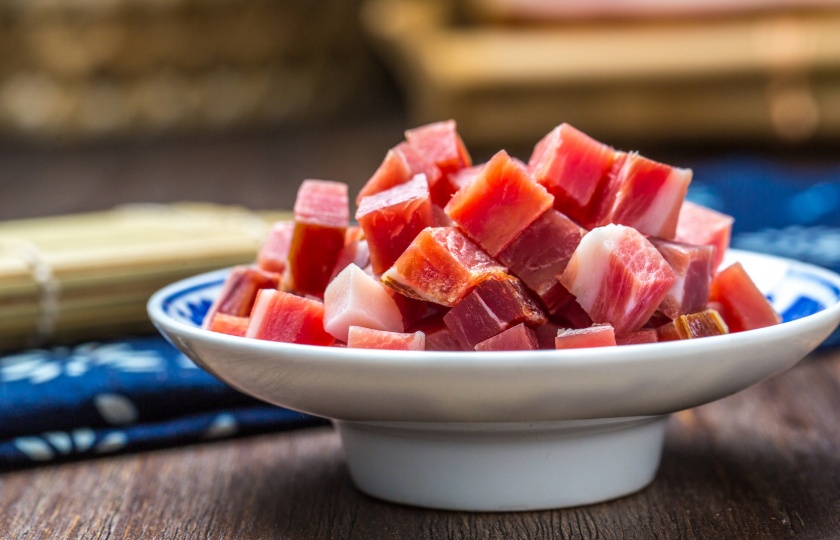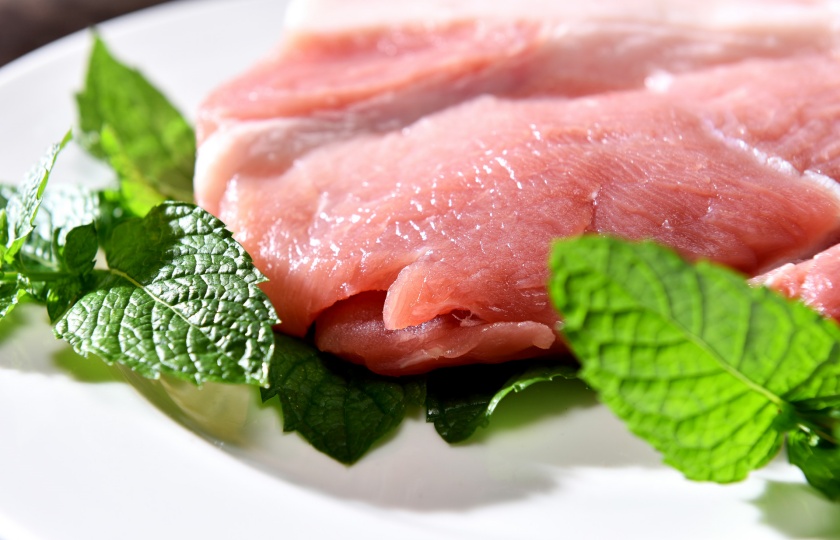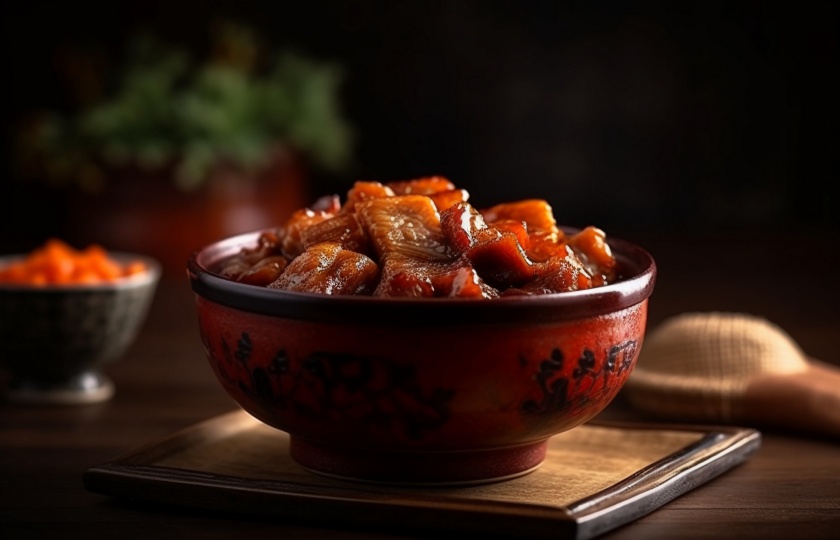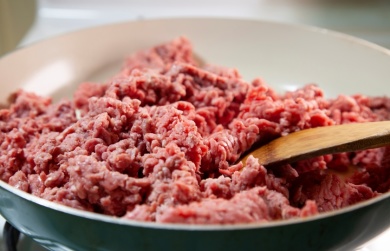New to odd beef cuts? Discover What is Beef Cheek Meat

Recently, I discovered a delicious dish - beef cheek meat. Its texture is delicate and chewy. Today, I'd like to introduce in detail what beef cheek meat is!
What is Beef Cheek Meat?
Beef cheek meat is actually the meat from the head of a cow, including the meat around the eyes, nose, and mouth. It is the best part.
Beef cheek meat has a tender and chewy texture and contains a large amount of collagen and minerals. It is suitable for various cooking methods, whether it's braising, stewing, or roasting.
There are various cooking methods for beef cheek meat, such as stewing, boiling, braising, and stir-frying. It can be made into braised beef cheek meat, spicy stir-fried beef cheek meat, or cold beef cheek meat. One characteristic of beef cheek meat is that it cooks easily, unlike beef shank which requires long cooking times.
Is Beef Cheek Meat the Same as Beef Shoulder Meat?
Beef cheek meat and beef shoulder meat are not the same.
Beef cheek meat is the facial meat of a cow. It has a firm texture and is rich in collagen. It is suitable for long stewing to make the meat tender and release a strong meaty aroma, resulting in a unique taste.

Beef shoulder meat is located on the front shoulder of the cow, above the front leg. The muscle composition is relatively complex. The meat is tender with a relatively high content of marbling fat. Similar to beef cheek meat, beef shoulder meat is also suitable for various cooking methods such as stewing, boiling, and braising, presenting different flavors.
Is Beef Cheek Meat Good?
Personally, I think beef cheek meat is delicious.
Beef cheek meat has a very delicate texture, with an even distribution of fat and lean. It melts in the mouth and doesn't taste tough at all. This is mainly because the beef cheek doesn't get much exercise, so it tastes extremely tender and has a strong meaty aroma. The more you chew, the more flavorful it becomes.
I remember the first time I cooked beef cheek meat, I made braised beef cheek meat. The texture was super soft and glutinous, and the sauce was rich. It was really satisfying. Take marinated beef cheek meat, for example. Dipped in some sauce, it also tastes great.
Of course, everyone has different tastes. Some people may not be interested in beef cheek meat or dislike its texture. But if you haven't tried it, I recommend you give it a try.
What is Beef Cheek Meat Similar to?
In my opinion, the texture and taste of beef cheek meat are very similar to pork cheek meat. Both are firm-textured ingredients with a certain chewiness. After cooking, they have a strong meaty aroma and delicious gravy.

Especially when beef cheek meat is stewed until very tender, the texture is really similar to the snout part of pork cheek meat. When you take a bite, you can not only feel the meatiness but also enjoy the wonderful experience of tasting the rich aroma of fat.
However, beef cheek meat and pork cheek meat have some differences in nutritional composition. Beef cheek meat is rich in high-quality protein and collagen, which is very beneficial for skin and overall health.
Is Beef Cheek Meat Good for Slow Cooking?
Beef cheek meat is suitable for stewing.
Beef cheek meat is an ingredient very suitable for long stewing. Firstly, beef cheek meat has a delicate texture with an even distribution of fat and lean. After slow cooking, it can become extremely soft and melt in the mouth. At the same time, it can fully absorb the flavors of seasonings.
When slow cooking beef cheek meat, you can first sear the whole piece of beef cheek meat over high heat until the surface turns golden brown. This can seal the meat juices, prevent the loss of nutrients, and enhance the flavor. Then add an appropriate amount of stock, red wine, and spices, and slow cook at a low temperature (such as 140 - 150°C) for 3 - 4 hours.
This cooking method can not only preserve the tender texture of beef cheek meat but also make the meat more tender and glutinous. It is very suitable to be served with pasta, mashed potatoes, or vegetables.
Secondly, after slow cooking, beef cheek meat can be further processed according to personal preferences. For example, sliced and made into cold dishes or stir-fried dishes, and the taste will still be excellent.
How to Cook Beef Cheek Meat
Ingredients Preparation
Beef cheek meat: About 500g, either whole or cut into pieces.
Seasonings: Sliced ginger, garlic cloves, scallions, star anise, cinnamon, bay leaves, Chinese prickly ash, cooking wine, light soy sauce, dark soy sauce, sugar, salt.
Side dishes: Green and red peppers, onions, etc. You can choose side dishes according to your personal preference.

Preparing Beef Cheek Meat
Wash the beef cheek meat and put the whole piece into cold water for blanching. Add sliced ginger and cooking wine. After boiling, skim off the scum, then take it out and drain the moisture.
Searing Beef Cheek Meat
Pour oil into the pan, add the beef cheek meat, and sear until both sides turn golden brown to seal the meat juices.
Frying Aromatic Seasonings
Leave a little oil in the pan, add sliced ginger, garlic cloves, star anise, cinnamon, bay leaves and other spices. Stir-fry until fragrant, then add an appropriate amount of sugar and stir-fry until it turns caramel-colored.
Stewing Beef Cheek Meat
Put the seared beef cheek meat into the pan, add an appropriate amount of light soy sauce, dark soy sauce, cooking wine, and hot water (enough to cover the beef cheek meat). Bring to a boil over high heat, then turn to low heat and simmer. If using a pressure cooker, the cooking time can be shortened to about 30 minutes.
Seasoning and Reducing the Sauce
After stewing until the beef cheek meat is tender and soft, add an appropriate amount of salt for seasoning. Turn to high heat to reduce the sauce until it becomes thick.
Plating
Add green and red peppers or onions, stir-fry evenly, then remove from the pan and plate.
Tip:
Beef cheek meat can withstand long stewing. It is better to stew it whole and then slice it to better preserve the meat juices.
Adding a small amount of coriander seeds or Chinese prickly ash during stewing can help remove the fishy smell.























